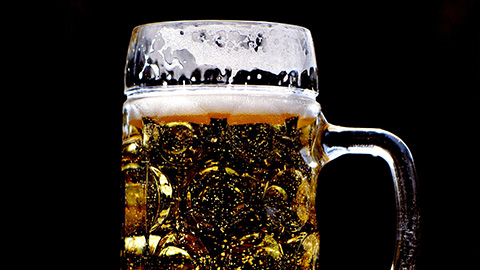Rye and Barley Contain Beneficial Bioactive Compounds - Beer is a good source
Like many other cereal grain food products, beer contains several chemical compounds which can be considered as beneficial for our body. In his doctoral dissertation, MSc Juha-Matti Pihlava showed that the chemical diversity of hordatines in barley and barley malt beer is much larger than previously know. He also found that wheat and rye malt beers contain benzoxazinoids, which in other studies have been indicated to have anticarcinogenic properties.

The aim of the study was to increase our knowledge of the minor components in cereals and cereal products. Although their amounts in cereals are low, they might act as beneficial, health-promoting compounds in our body. Mr. Pihlava studied the quantities of these compounds in rye, oats, barley and wheat grains, and in food products that contain them, such as flakes, breads and beers.
– The results could be useful, for example, in the development of a new type of cereal-based food products, says Mr. Pihlava who is working as a scientist in Natural Resources Institute Finland (Luke).
In his dissertation, Mr. Pihlava focused on avenathramides in oats, hordatines in barley, and benzoxazinoids in rye and wheat. Of a special interest were various flavonoids in rye grain and rye products, since these have not been widely studied previously. In addition, he and his colleagues determined the content of alkylresorcinols and phenolic acids in rye, wheat and barley, and lignans in rye.
– It is interesting that most of these secondary metabolites act in the plant´s defense system, for example, against fungal diseases or herbivores, and, at the same time, act as beneficial compounds as a part of our diet. These compounds can have antioxidative, anti-inflammatoric or anticarcinogenic properties, Mr. Pihlava explains.
Beer is an interesting example of a much studied cereal food product which still can offer surprises. Some 15 years ago, Japanese scientists found that certain hordatines in beer stimulated gastrointestinal motility and thus prevent constipation.
Until 2014, only a few basic structures of hordatines were know, then two independently conducted studies showed that the number of the basic structures can be high as 12 and that certain hordatine glycosides in beer can have even nine sugar residues.
In addition of identifying new hordatines and their precursors, Mr. Pihlava and his team analysed the total hordatine content in over 200 beers.
– With the exception of the wheat and rye beers, the amount of total hordatine content correlates to the alcohol by volume. It is noteworthy that a quite high total hordatine content was also found in non- or low-alcoholic beers. There is some indication in Japanese studies that hordatines may contribute to the flavor of beer by being bitter and astringent compounds, Mr. Pihlava continues.
A new, interesting finding were the various forms of benzoxazinoids in wheat and rye malt beers. The amounts can be considerable even in non- or low-alcoholic beers. There are some indications that these compounds may have anticarcinogenic properties. However, Mr. Pihlava emphasises that direct conclusions that wheat or rye beer could prevent cancer cannot be made.
– Variation of benzoxazinoid content in wheat and ryemalt beers was high and more research is needed in order to find out the most efficient way to transfer benzoxazinoids from malt to wort and to maintain their amounts in beer or other beverages, outlines Mr. Pihlava.
According to Mr. Pihlava, other good sources of benzoxazinoids are sourdough rye breads, rye crisp breads, and especially rye malt flour. Additionally, rye grains and rye products contain also a wide range of flavonoids, although their quantities compared to berries, fruits and vegetables are low.
– Because these compounds were also found in sourdough rye bread, rye crisp bread, and rye malts, it can be concluded that these compounds can at least partly withstand quite harsh food processing conditions, Pihlava continues.
>> MSc Juha-Matti Pihlava defends his dissertation in food chemistry on 3 August 2017
>> The dissertation was published online